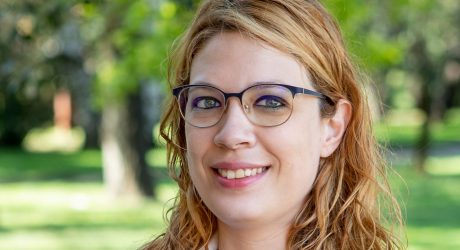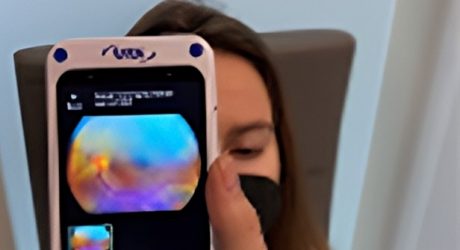Diabetic patients in rural areas will be able to be diagnosed with diabetic retinopathy in the early stages of the disease thanks to a mobile system
In Spain, 25% of the population either has diabetes or is in a previous or early stage of the disease, according to the Di@bet.es study, led by CIBERDEM and financed by the Instituto de Salud Carlos III. As the incidence is growing in recent years, the Ophthalmolog Research Group of the Institut d’Investigació Sanitària Pere Virgili (IISPV) and ITAKA Group (Intelligent Technologies for Advanced Knowledge Acquisition), from the Universitat Rovira i Virgli (URV), have developed a software and a system based on artificial intelligence to diagnose the diabetic retinopathy, a common eye disorder in patients with type 2 diabetes, which is the leading cause of low vision in adults between 50 and 70 years of age in the Western world, and one of the main causes of blindness in the Third World (the higher prevalence being linked with a large number of infections). A timely treatment is crucial to prevent the diabetic retinopathy from progressing since “it’s a silent and an asymptomatic disease, which means that when the patient goes to the doctor it is often too late”, explains Pere Romero, head of both the IISPV Ophthalmology research group and this service at the Hospital Universitari Sant Joan de Reus and tenured professor at the URV.
Currently, the National Health System in Spain includes an annual examination of the fundus of the eye for each patient with diabetes. This test is carried out in hospitals with the help of a retinography. However, in the real life, these medical centers are not accessible for everyone (in Catalonia, for example, 5% of the population lives in rural areas, and this percentage is continuously increasing). Hence, these researchers have developed a mobile system in collaboration with several partners (Telefónica and TRC), so that it is the general practitioner who takes the necessary photograph for this examination. Through an automatic reading system, he can determine whether or not the patient suffers from retinopathy.
If so, the doctor, by previously entering the patient’s data into a system based on artificial intelligence, will be able to know when the next check-up should be carried out. In this way, the patient can have a more exhaustive control of the disease. These tests with the new mobile system will soon begin to be carried out in some primary care centers in rural areas of Catalonia.
“We have developed two algorithms, one for automatic image reading, which makes it possible to identify whether or not there is diabetic retinopathy and what type. This helps primary care physician to treat patients. The second algorithm is a diagnostic aid system –RETIPROGRAM– which, based on a series of parameters, determines the diabetic patient’s risk of suffering from diabetic retinopathy, in addition to calculating when the next control should be carried out”, adds Pere Romero.
The professor of the Department of Computer Engineering and Mathematics of the URV, Domènec Puig (and also an IISPV researcher in this project) is another important actor since his team is the one in charge of developing the artificial intelligence algorithms: “We saw the possibility of linking computation with retinal image analysis to automate screening by using computer vision methods. Automating means being able to guide decisions to help diagnose, that is, to implement algorithms that offer the doctor a help, to facilitate his work”, explains. And he stresses: “We are not talking in any case of replacing the specialist doctor”.
The basis of this computing system is Deep Learning: thousands of images of the patient’s eye fundus are taken and labelled according to the degree of evolution of diabetic retinopathy. In this way, the software developed by this team analyzes thousands of images with the help of artificial intelligence, learns from these cases and classifies them based on the patterns it identifies “because when new images arrive, a diagnosis can be made based on that training process”, explains Domènec Puig. And he underlines: “the broader that training is, the more reliable the system is”.
This project has received support from the Fondo de Investigaciones Sanitarias (FIS), granted by the Instituto de Salud Carlos III. In 2021, a RetinaReadDisk consortium was created with the participation of seven partners: Telefónica SA, Grupo TRC, Genesis Biomed, the Institut Català de la Salut, the Institut d’Investigació Sanitària Pere Virgili and the French organizations Fondation de l’Avenir and E’Seniors. Thanks to these synergies, the project has been able to access the financial support network of EIT Health, an organization supported by the European Union.
Given that until now the images have been obtained using a retinograph, the challenge now facing these researchers is to retrain and adapt the system so that it is sensitive to the images obtained through this new mobile device. This technological breakthrough illustrates the potential of personalized medicine (also referred to as precision medicine). Currently, this project is marketed in France and Spain and it is expected to be commercialized in South America as well.




